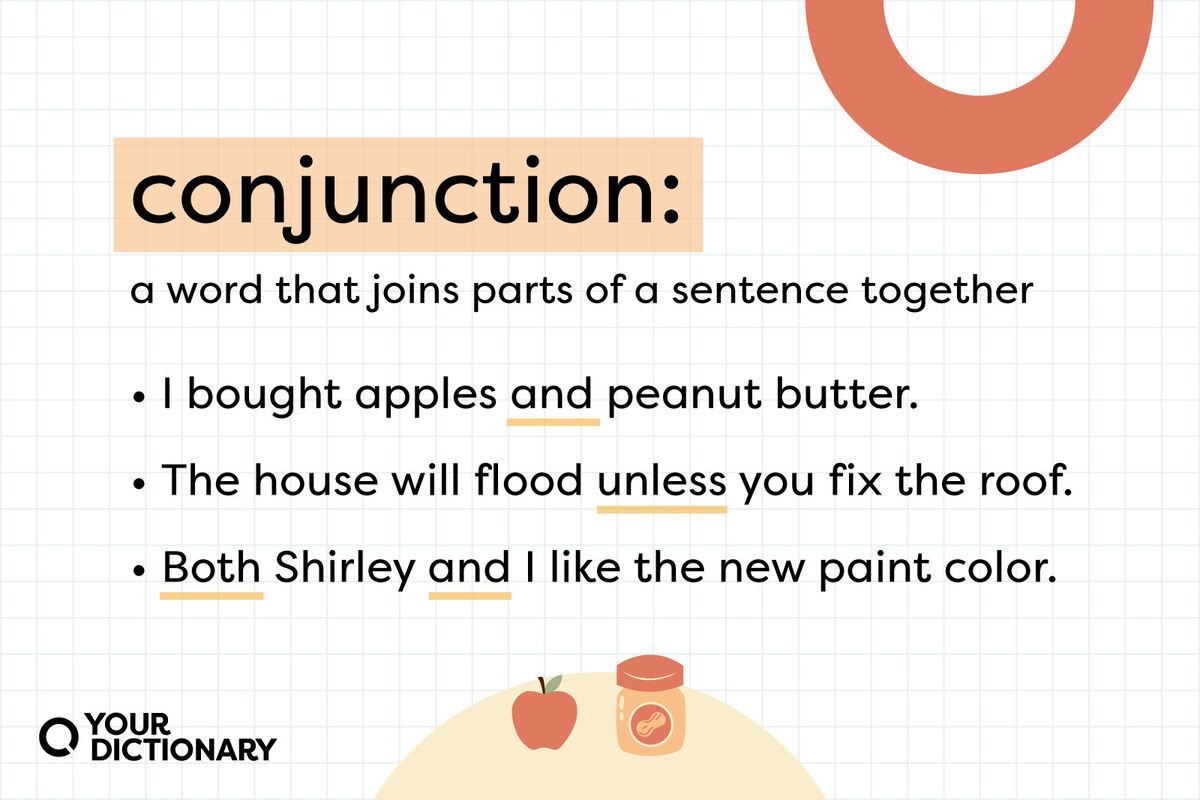
Do you have that one friend who’s great at bringing people together for a party? They’re the real-life version of a conjunction — a word that brings parts of a sentence together (a word party, of sorts). Conjunctions can be small words (or, but, and), or they can be big words (because, although, whenever). But no matter their size, conjunctions make your writing — and your word party — more interesting.
What Is a Conjunction?
Conjunctions are connective or linking words. They join thoughts, actions, and ideas in writing and speech.
There are three types of conjunctions:
- coordinating conjunctions (for, and, nor, but, or, yet, so)
- subordinating conjunctions (although, because, if, since, unless, until, whenever, etc.)
- correlative conjunctions (neither/nor, either/or, not only/but also, as/as, etc.)
Unless you speak only in simple sentences, you use conjunctions in every sentence (including that one — unless is a subordinating conjunction). But chances are, you like to vary your sentence structure now and then, so conjunctions are a great tool to have.
What Do Conjunctions Do?
Conjunctions connect words, phrases, and clauses (both dependent and independent). But their exact role depends on which conjunctions you choose.
Coordinating Conjunctions Join Words and Join Independent Clauses
You can use coordinating conjunctions to join words of the same part of speech together in a sentence.
- I bought apples and peanut butter. (both apples and peanut butter are nouns)
- We can walk or drive to the movie theater. (both walk and drive are verbs)
Coordinating conjunctions also join independent clauses, which are clauses that can function as full sentences. These new sentences are called compound sentences — two independent clauses joined by a coordinating conjunction.
- Paul was late for school. He took a shortcut.
- Paul was late for school, so he took a shortcut.
- My aunt bought a new car. She still wants a motorcycle.
- My aunt bought a new car, but she still wants a motorcycle.
Subordinating Conjunctions Add Dependent Clauses to Independent Clauses
Dependent clauses (also called subordinate clauses) can’t stand alone as full sentences, but they can add more information to independent clauses. They start with subordinating conjunctions, and adding one to an independent clause creates a complex sentence.
- We had to cancel the class picnic because it was raining.
- Mike sold his house even though he loved it.
- The house will flood unless you fix the roof.
If you want to vary your sentence structure, you can change the order of the clauses and put the subordinating conjunction first, followed by a comma.
- Because it was raining, we had to cancel the class picnic.
- Even though he loved it, Mike sold his house.
- Unless you fix the roof, the house will flood.
Correlative Conjunctions Connect Concepts of Equal Importance
Unlike coordinating and subordinating conjunctions, correlative conjunctions don’t create new sentence types. Instead, they join two parts of a sentence or two statements of equal importance.
- Both Shirley and I like the new paint color. (Both/and connects the subjects of the sentence, Shirley and I)
- Whether we win or lose, our coach will be proud of us. (Whether/or connects the verbs win and lose)
- Either you give our team a raise, or we all quit. (Either/or connects the statements you give our team a raise and we all quit)
Conjunctions Prevent Comma Splices
A comma splice is a common grammar error in which a coordinating conjunction or semicolon is missing, leaving only a comma between independent clauses. For example:
- I love you so much, I want to marry you.
- Lauren wants to drive there, she doesn’t have any gas.
- The movie is sold out, let’s get some pizza.
While you can probably guess the meaning of each sentence, they make a lot more sense when you fix the comma splice and add the proper conjunctions.
- I love you so much, and I want to marry you.
- Lauren wants to drive there, but she doesn’t have any gas.
- The movie is sold out, so let’s get some pizza.
Can Adverbs Be Conjunctions?
Conjunctive adverbs (therefore, incidentally, however, furthermore, etc.) are a special type of adverb that function as conjunctions.
Sometimes called adverbial conjunctions, these words connect two complete thoughts between two sentences. They typically come after a period or semicolon (which also joins two independent clauses).
- We can’t afford this car. Therefore, we’ll need to choose a less expensive one.
- Lola is allergic to shellfish; however, we can eat everything else on the menu.
- I really don’t like camping. Nevertheless, I’ll go if everyone else wants to.
Consider These Conjunction Resources
Now that you know the three different types of conjunctions, practice telling them apart — and using them correctly — with a number of conjunction worksheets, quizzes, and guides.
- Print a conjunctions exercise with a helpful answer key to challenge yourself or students.
- Learn how to teach conjunctions in a variety of grade levels.
- Review how conditional conjunctions (a type of subordinating conjunction) change the meaning of a sentence.
- Use conjunctions to create different types of sentences, including compound, complex, and compound-complex sentences.